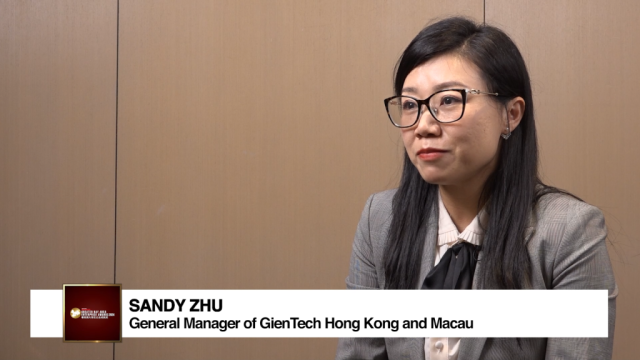How 5G will keep Hong Kong connected
By Brian Lavall�eThe beauty of living in a place where the history and geographic location fuels inventive minds is very apparent here in Hong Kong. The city’s landscape pushes builders to create the astonishing feats of engineering that are our bridges and tunnels. And the fast-paced economy has led to the world-renowned MTR public transportation system, that notably has strong cellular signals available underground, allowing passengers to remain connected whilst traveling on the train. Hong Kong’s history of being a hub for Asia-Pacific trade fuels the region’s desire to be connected via e-commerce.
A much anticipated infrastructure innovation to hit Hong Kong is 5G, with the city expected to be one of the first in the world to roll it out. There are other countries across the region, such as South Korea, Singapore and Japan, who are also looking to be the first to offer 5G. In the case of Hong Kong, city officials’ ambitions to be one of the first locations in Asia to roll out 5G is coupled with the desire for Hong Kong to also become an innovation hub and smart city. With these goals in mind, Hong Kong’s urban planning officials must take into consideration the city residents’ increasing reliance on constant, high-quality connectivity, and respond by integrating a network that can handle the fluctuating demands caused by these users.
Population density and the need for connectivity
Few places on earth have denser populations than Hong Kong’s neighborhoods, so supplying high quality connectivity can be rife with challenges. By 2021, it’s predicted that more than 80 percent of Hong Kong’s population will use a smartphone: That’s 6.1 million people. The Smart City Blueprint highlights this rapid increase in mobile use. The penetration rate will reach 232.2 percent, one of the highest in the world.
Hong Kong residents use smartphones in increasingly data-intensive ways. From video chatting on the tram and watching videos on the MTR during rush hour, to live-streaming at crowded events, people have rising expectations of what they can do with their smartphones. And that is just the beginning.
In addition to smartphone use is Hong Kong’s Smart City Blueprint’s Internet of Things proposal. Per the plan, smart sensors will be deployed all over the city, connecting services to users via mobile networks. From notifications about nearby traffic to city lighting management to waste disposal, these sensors will touch every part of city life – and the key to that will be networks that can support the traffic generated by use of these services.
For a smart city to function properly, and especially in Hong Kong, mobile networks must be adaptive, reliable, and able to carry vast amounts of data. With huge volumes of people depending on mobile connectivity, networks need to handle high demand during peak times as well as they do during quieter periods. Think how many more smartphone users are active around Admiralty Station at 09:00 than at 01:00. And that’s without including the installation of smart city sensors.
It’s why the promised agility and programmability of 5G networks is the answer. They’ll be designed to adjust and flex dynamically to surges in traffic and demand – something that often occurs in Hong Kong. From people streaming video during their commute, to businesses pushing the boundaries of the IoT, 5G can satisfy this growing mobile broadband use. But can Hong Kong build out a dynamic 5G network with existing network infrastructure?
Achieving 5G’s scale and success
Industry experts agree that network functions virtualisation (NFV) is key to achieving the mass scale and high quality of service requirements of 5G. Without this scale and service quality, a network wouldn’t be able to keep Hong Kong’s crowds and smart city connected during peak traffic.
Take smart parking for example. Apps provide drivers with real-time parking space data, helping them find spaces much faster. The huge improvements this made to Hong Kong commuters was picked out in EasyPark’s review of smart cities. Hong Kong’s smart parking was scored 8.62 out of 10 – the city’s highest section in the entire report. When other smart sensors and apps are rolled out across the city, as per the Smart City Blueprint, people’s lives will undoubtedly get easier. But on current networks, fluctuating usage and the demand for real-time information will stop the apps and sensors from communicating properly, causing more issues than they solve.
However with 5G network slicing capabilities, where Mobile Network Operators (MNOs) manage and operate multiple virtual networks over a common physical network infrastructure, operators can allocate capacity, coverage and speed according to the required demands. So, even during peak hours, everyone in the city – and the city itself – can stay connected.
The need for adaptive networking
Humans are physically incapable of managing the sheer number of sensors, devices, and users on a smart city network. We simply don’t have the ability to process and act on huge volumes and velocity of incoming information – especially not in real-time. So, if Hong Kong is to become a smart city that stays connected at all hours, automation is a must.
Our current manual processes simply cannot handle the reactive and proactive operations needed to manage virtualised, highly dynamic networks. For example, when a task requires rapid-fire execution, such as when demand fluctuates, manual involvement and legacy processes won’t cut it. But with automation, Hong Kong can unlock the capabilities that 5G enables.
This can’t just be applied to legacy processes, though. Operators need to evaluate the processes involved in supporting simultaneous use of city services and residents’ use of applications that will operate on a 5G network, and only then apply automation. Network operators need to focus on building a network that is not only faster and smarter, but adaptive where the network can adapt to change, not just be automated in reaction to change. One of the key components of an adaptive network is cloud-native software control and automation such as Software Defined Networking (SDN) and Network Functions Virtualisation (NFV) that can help operators achieve true network flexibility – as well as the agility and resilience needed to keep Hong Kong connected.
To keep up with today’s demands and tomorrow’s possibilities, improving networks isn’t a case of installing more of the same hardware that’s available today. Use of SDN and NFV within adaptive network aids operators to effortlessly keep Hong Kong’s crowds and smart city infrastructure connected, even during peak hours.























 Advertise
Advertise








